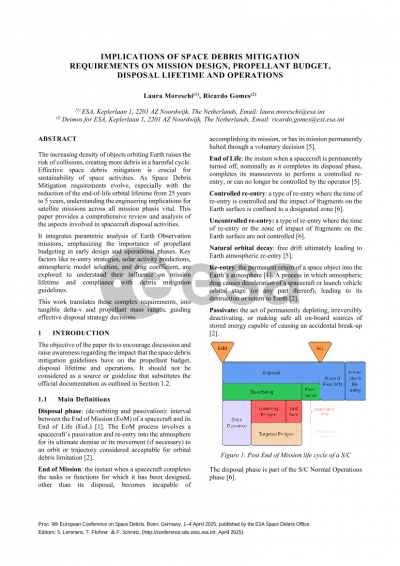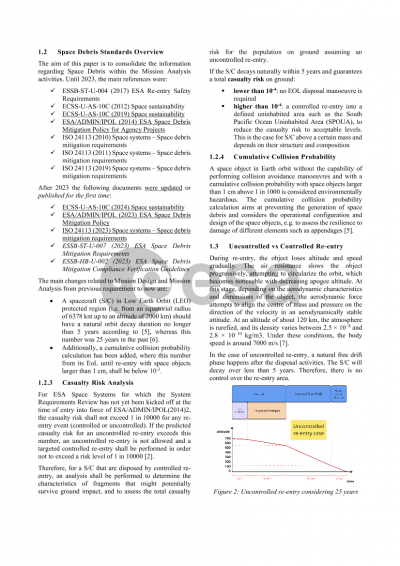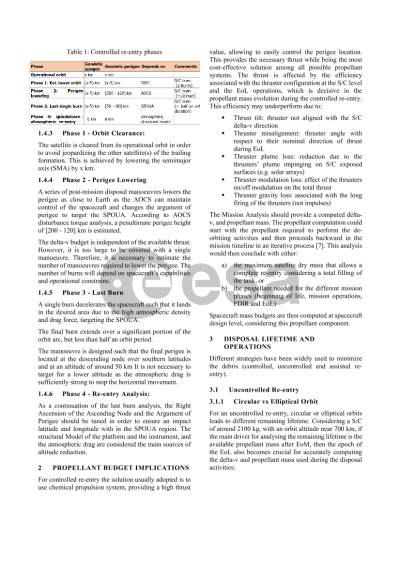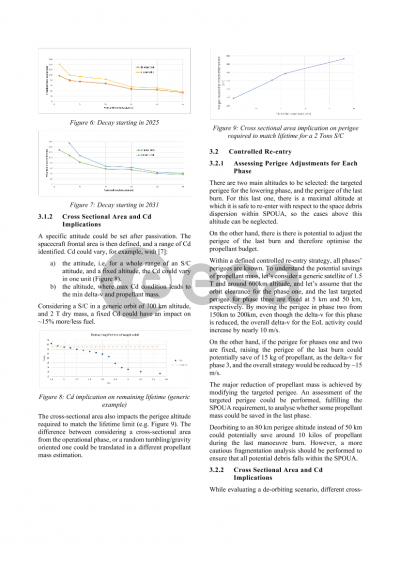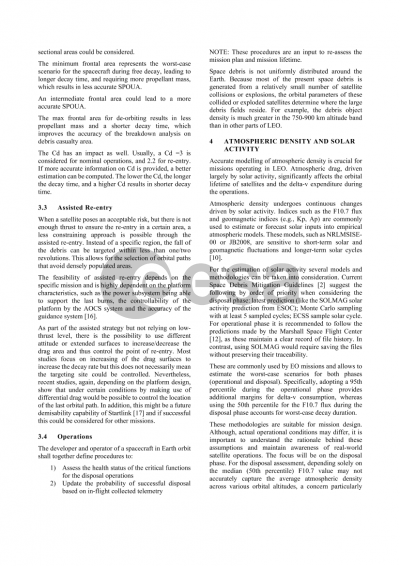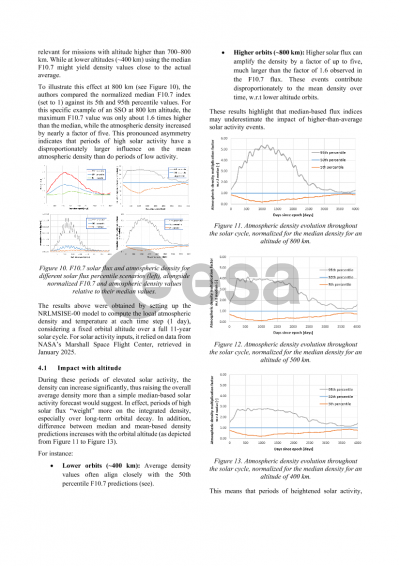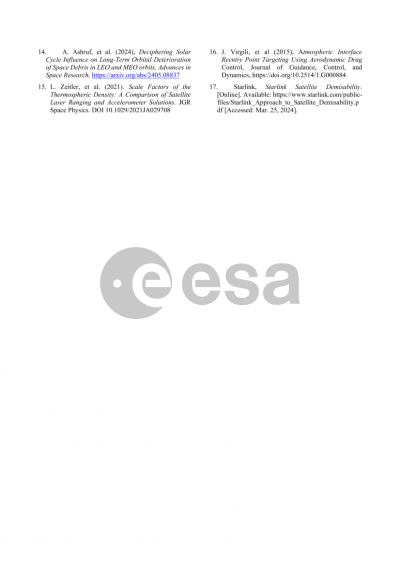Document details

Abstract
The increasing density of objects orbiting Earth amplifies the potential for further collisions, creating even more debris in a harmful cycle. Effective space debris mitigation measures are essential to preserving the long-term sustainability of space activities. Nevertheless, as Space Debris Mitigation requirements evolve, especially with the recent reduction of the end-of-life orbital lifetime requirement from 25 years to 5 years, it is also critical to understand the engineering implications for satellite missions across all mission phases. This paper provides a comprehensive review and analysis of the aspects involved in spacecraft disposal activities, focusing on the impact of the 5-year rule on mission design, re-entry strategies selection, and propellant budgeting.
The study integrates parametric analysis of various Earth Observation missions in different development phases, emphasizing the critical importance on both early-phase design propellant budgeting, and operational phases propellant assessments, from launch to final disposal. Key factors, such as re-entry strategies (controlled and uncontrolled), solar activity predictions, atmospheric model selection, and evolution of the drag coefficient during mission operations, are explored to understand their influence on mission lifetime predictions and the compliance with debris mitigation guidelines. In addition, for controlled re-entry, the study illustrates the interrelationship between the four expected distinct phases: orbit clearance, perigee lowering, last burn and depletion.
By consolidating existing knowledge and presenting new insights, this provides a clear framework, translating these complex requirements into tangible delta-v and propellant mass ranges, which is essential for effective decision-making in satellite disposal strategy selection.
Preview
